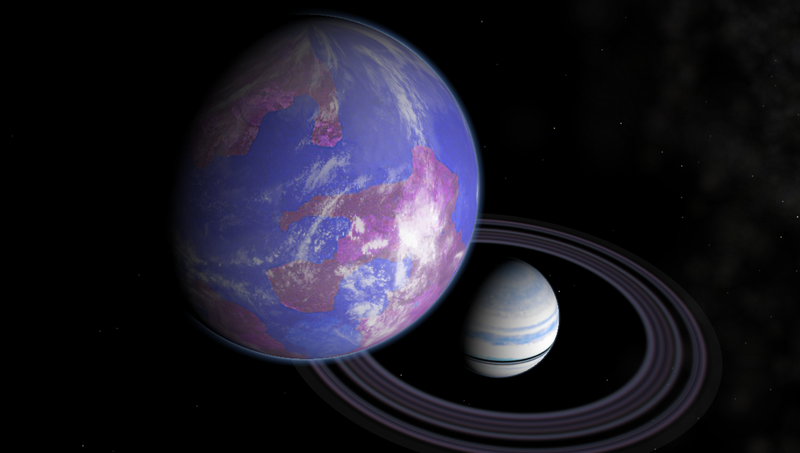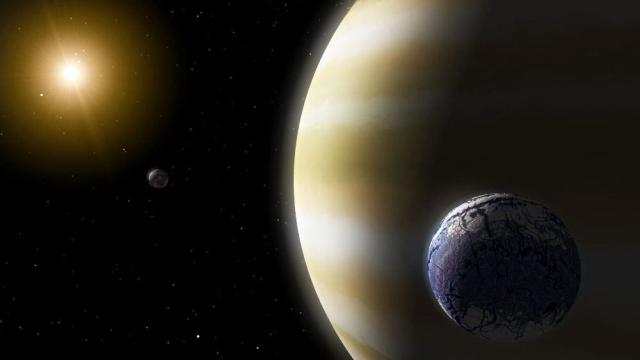Thanks largely to NASA’s Kepler space telescope, astronomers have found thousands of exoplanets lurking outside our solar system. Finding what creeps around those planets, however, has proven itself to be incredibly challenging. While scientists have had a few close calls with exomoons over the years, so far, no discovery’s been legit. But a group of astronomers at Columbia University now think they have found an exomoon for real, roughly 4000 lightyears away.
Image: NASA/JPL-Caltech
After mulling over old Kepler data, the researchers think they have found evidence of the telescope spotting a Jupiter-sized planet and a Neptune-sized moon passing in front of a star, called Kepler-1625. When a planet and/or moon passes in front of a planet, or transits, it causes a dip in light, which is why the team here thinks they’re onto something. They plan to confirm their finding using the much more powerful Hubble Telescope.
“After our largest survey to date, we have recently detected a strong candidate moon signal in the light curve of Kepler-1625b,” the team wrote in a request for Hubble observing time on October 29. The planet exhibits three transits in the Kepler data (P~287 days), in which we detect out-of-transit flux dips consistent with the presence of a large moon.”
But if past flubs prove anything, it’s that spotting exomoons is trickier than it sounds.

Image: NASA
“Exomoons are hard to detect because moons are typically much smaller than their host planets and thus typically don’t affect the transit eclipse light changes, except if the moon is large as in the case of this system,” Edward Guinan, a professor of astronomy and astrophysics at Villanova University, told Gizmodo. Indeed, a Neptune-sized moon would challenge our solar system-centric understanding of what a “moon” is.
But is it worth hunting for exomoons for any particular reasons, other than the fact that it’d be cool to find them?
“Because moons are numerous in our solar system, they are likely very common in other planetary systems. Additional observation proposed with Hubble may be able to confirm this exomoon,” Guinan said. “The discovery of exomoons is very important since some of these moons could provide additional habitats (niches) for life.” In our own solar system, two moons — Enceladus and Europa — have already proven themselves worthy prospects for supporting liquid water oceans and even life.
Hopefully we’ve found an exomoon this time. Who doesn’t want to discover an alien moon? If we strike out again, big league telescopes like the James Webb Telescope will do the trick one day — fingers crossed.
